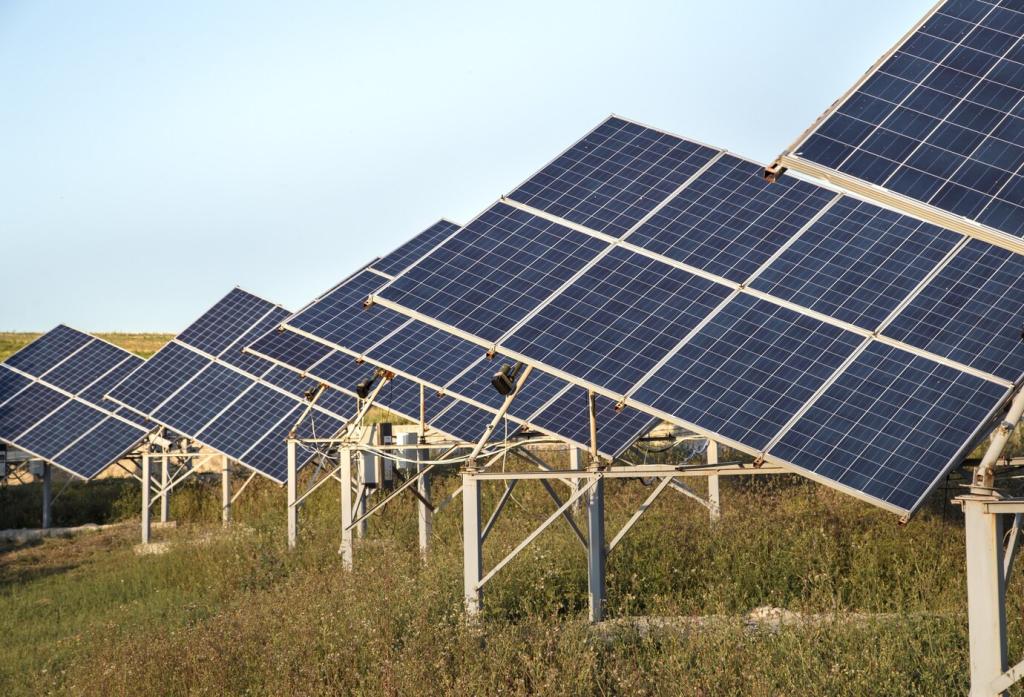Sustainable Urban Design Through Innovative Technology
Sustainable urban design is transforming city environments into smarter, greener, and more livable spaces. Powered by innovative technology, urban planners are reimagining infrastructure, resources, and daily experiences to cultivate cities that thrive environmentally, socially, and economically. This page delves into how cutting-edge solutions are paving the way for sustainable cities of the future, detailing advancements and approaches that blend ecological responsibility with the comforts of modern urban life.
Rethinking City Planning with Digital Tools
GIS-Based Urban Analysis
Geographic Information Systems (GIS) have revolutionized the way city planners approach the design and evaluation of urban environments. With precise, real-time mapping, planners can assess land use, infrastructure needs, and environmental factors with remarkable accuracy. This technology supports sustainable decisions, such as identifying optimal sites for green spaces, monitoring floodplains, or tracking air quality hotspots. By integrating data layers from diverse sources, GIS provides a holistic view of the city, unearthing connections that guide long-term sustainable growth and ensure that every development aligns with ecological goals.
3D Modeling and Simulation
Three-dimensional modeling allows stakeholders to visualize proposed cityscapes and infrastructure before construction even begins. Through sophisticated simulations, planners test variables such as sunlight access, wind flow, and pedestrian movement. This foresight enables them to fine-tune designs to maximize energy efficiency, comfort, and accessibility. Advanced simulation tools also help explore climate adaptation strategies, ensuring that new developments remain resilient in the face of environmental changes. The result is urban environments tailored not only to current needs but engineered to thrive for generations.
Data-Driven Decision Making
Big data analytics have empowered urban planners to make more informed and responsive decisions. By analyzing data from sensors, mobile devices, and public records, planners can identify trends, monitor resource consumption, and evaluate the impact of urban projects in real-time. This evidence-based approach supports proactive problem solving, such as preemptively addressing congestion or predicting energy spikes. In turn, cities become more adaptable and resilient, continuously shaping themselves to better serve people and planet alike.
Smart Infrastructure for Eco-Friendly Cities
Intelligent Transportation Systems
Intelligent transportation systems aim to reduce traffic congestion, pollution, and commute times by leveraging real-time data and automation. Smart traffic signals adjust flow dynamically, public transit apps provide up-to-the-minute schedules, and ride-sharing platforms promote carpooling. These solutions work together to decrease vehicle emissions, encourage public transit use, and foster more walkable communities. As cities grow more connected, the role of efficient and eco-friendly mobility becomes ever more vital to sustainability efforts.
Energy-Efficient Building Technologies
Modern architecture is increasingly defined by energy-efficient innovations. Smart thermostats, automated lighting, and responsive building envelopes minimize energy waste while maximizing comfort. Advanced materials, such as high-performance glazing and green roofs, work hand-in-hand with IoT sensors to adapt buildings in real-time to occupant needs and weather conditions. By embedding intelligence in homes and offices, cities can significantly reduce their carbon footprints without sacrificing convenience or wellbeing.
Adaptive Utilities and Waste Management
Water, electricity, and waste management systems embedded with smart sensors optimize delivery and consumption. Utilities can detect leaks, forecast peak usage, and rapidly reroute resources to where they are needed most. Waste collection routes adjust automatically based on bin fullness data, reducing unnecessary trips and lowering emissions. These adaptive systems not only conserve resources but save municipalities money, freeing funds for further sustainability initiatives that benefit the entire community.

Green Mobility Innovations
The introduction of electric and hybrid vehicles has drastically reduced the pollution associated with urban transportation. Charging infrastructure is expanding, making transitions from fossil-fuelled cars to electric vehicles more feasible for individuals and fleet operators. Public transit systems are adopting electric buses and light rail, further slashing emissions. By nurturing this shift through policy and city planning, urban centers are accelerating their journey toward a zero-emission future.

Urban Green Spaces Powered by Technology
Smart sensors allow urban green spaces to thrive by delivering water and nutrients precisely when needed. Automated irrigation systems respond to real-time conditions, minimizing waste and supporting biodiversity. These technologies provide crucial data on soil health, plant growth, and even visitor patterns, enabling continuous improvement of green infrastructure. The result is sustainably lush environments, resilient to weather extremes and well-integrated into urban systems.

Building Efficiency and Smart Energy Management
Smart Grids and Renewable Integration
Smart grid systems transform energy distribution by actively balancing supply and demand, integrating renewable sources like solar and wind with conventional power. Advanced meters and demand response technologies enable real-time monitoring and control, empowering both providers and consumers to make energy-smart decisions. This digital backbone supports a cleaner, more resilient urban energy landscape, reducing reliance on fossil fuels and lowering emissions at scale.
IoT-Enabled Building Automation
Internet of Things (IoT) devices are ushering in a new era of building management. Sensors track occupancy, temperature, lighting, and even air quality, allowing automated systems to fine-tune environments for maximum comfort and minimum energy use. Predictive maintenance reduces downtime and extends equipment lifespans, lowering costs and environmental impact. By combining real-time data with machine learning, smart buildings become living systems—self-regulating, efficient, and sustainable.
Energy Consumption Analytics and Optimization
Advanced analytics platforms digest vast streams of energy consumption data in commercial, residential, and public buildings. These platforms highlight inefficiencies, uncover usage patterns, and recommend optimizations—from scheduling energy use during off-peak hours to identifying hidden energy drains. By embracing data-driven energy management, cities can achieve substantial savings and progress rapidly toward ambitious emissions targets, all while delivering better experiences for occupants.
Water Management for Urban Resilience
Smart Water Grids and Leak Detection
Connected sensors and real-time monitoring enable water utilities to pinpoint leaks, track losses, and respond instantly to potential issues. Intelligent water grids optimize distribution and pressure, adjusting to consumption patterns throughout the day. This not only conserves precious resources but also cuts operational costs, reducing the energy needed to treat and pump water. Transparent data access empowers both utilities and residents to partner in achieving long-term sustainability.


Virtual Public Consultations
Digital platforms now enable city planners to connect with diverse residents through virtual town halls, online surveys, and interactive forums. These tools tear down barriers to participation, allowing people to voice concerns, share ideas, and comment on urban proposals from the comfort of their homes. This democratized approach fosters transparency and inclusivity, ensuring that sustainable design solutions are rooted in broad-based community support.
Participatory Mapping and Urban Data Sharing
Participatory mapping platforms invite citizens to contribute real-world observations about their neighborhoods, from highlighting safety issues to pinpointing local gems worth preserving. By weaving these grassroots insights into the fabric of city data, urban planners can identify priorities that might otherwise be overlooked. Open data portals give residents access to vital urban information, fostering accountability and communal problem-solving in pursuit of sustainability.
Digital Empowerment for Marginalized Groups
Technology can bridge gaps for marginalized or underserved communities, giving them a seat at the urban design table. Mobile apps and multilingual platforms reduce language and accessibility barriers, while digital storytelling tools amplify the voices of those most affected by change. By engaging everyone in the process, cities create environments that serve the entire population, building resilience and equity into the DNA of urban life.
